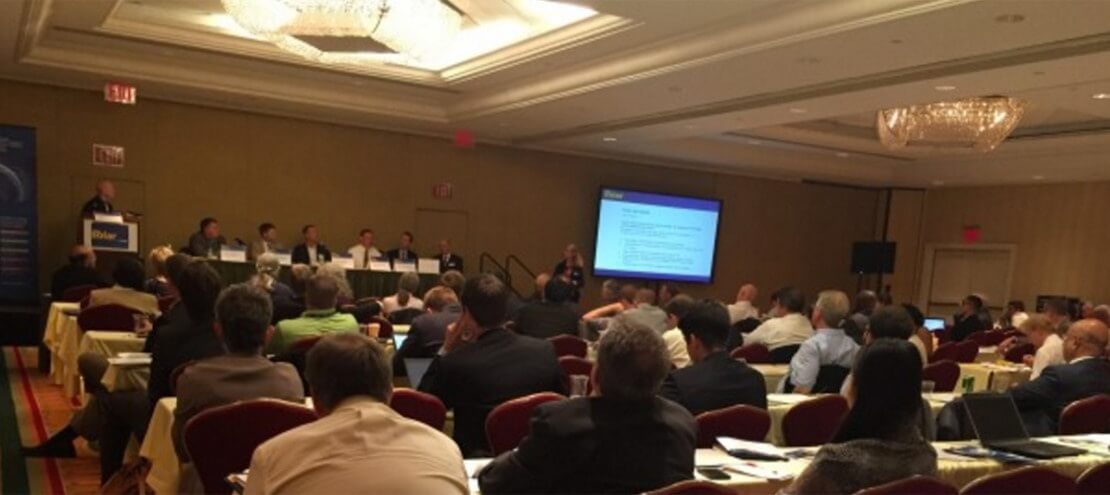
By now, most of us are familiar with the incredible solar success story: according to the Solar Energy Industries Association (SEIA), the cumulative U.S. solar capacity is now 20 gigawatts of total installed capacity, enough to power 4 million American homes. Thirty-two percent of new electric generating capacity came from solar in 2014, and the industry now employs nearly 175,000 workers — more than Google, Apple, Facebook and Twitter combined.
But, like a spot on the face of the sun, there’s a dark side to this bright picture that was a theme at the Intersolar Summit USA East held recently in Brooklyn. In the words of Public Service Enterprise Group Chairman, President and CEO Ralph Izzo, who delivered a plenary speech, that spot is “regressivity.” Izzo noted that while the average U.S. household income is $50,000 and the average household income in New Jersey, where PSEG is based, is $70,000, the average income for households that install solar is $120,000.
In the view of many of the speakers at the summit, the result is that all electricity ratepayers – including those at the lowest end of the income spectrum – are subsidizing solar for high-income adopters of solar technology through ratepayer-funded financial incentives. Though some of the speakers took issue with this viewpoint, arguing that the broader advantages of solar – including in terms of the environment, energy independence and job creation – accrue equally to all ratepayers regardless of income, the problem of how to address the issue of regressivity was nevertheless a subject of concern at the event.
One solution to the regressivity issue is community solar. Although it can take many forms, which tend to be dictated by local regulations, the basic idea of community solar is for homeowners, businesses or government entities to band together to install solar for the benefit of the group, as opposed to an individual entity installing solar for personal benefit. For example, community solar allows the energy generated by a solar system on the roof of a school in a municipal complex to be used not only by the school, but also by the neighboring municipal buildings. Or, to address the regressivity issue, it allows the solar installed on the roofs of a few houses on a low-income block to be used by residents of the entire block, despite the fact that some of the houses may not be suited for solar because of shading, poor roof orientation or ownership status.
At the Intersolar summit, I had the pleasure of speaking with an attendee who is leading a community solar venture in the Park Slope section of Brooklyn. A group of 20 households in the historic brownstone neighborhood is planning to install an approximately 400-kilowatt solar system that will meet about 20 percent of their electricity needs. The Park Slope example is also interesting because the homeowners are planning to install a battery storage system that will store the excess energy produced when the sun is shining for use at night or on cloudy days. The proposed Park Slope system isn’t large enough to meet all of the homeowners’ power needs, but a larger system that includes battery storage would allow a group to live independently of the grid. Also, while the exclusive Park Slope neighborhood hardly qualifies as low income, one can imagine a similar concept being applied in a low-income area.
An important point about community solar is that it is enabled by technology that allows participants to communicate with one another, with the electric grid and with the solar system. Marshall McLuhan – the philosopher of communication theory whose ideas dominated the popular culture of the 1960s and 1970s – was known for the concept of the “electronic hearth,” or the notion that a group gathered around a television set is linked by the mass media to a collective identity he called the “global village.” While we are all still participants to some extent in the global village, the digital revolution is challenging the dominance of the mass media through the proliferation of small networks of like-minded people. Community solar is a manifestation of the erosion of the tyranny of monolithic institutions that is being enabled by technological innovation, which author Steve Sammartino has called “the great fragmentation.” In the case of community solar, the technology is disrupting the utility business model, but we also see fragmentation in the challenge posed by social media to traditional news institutions, by cell phones to telephone companies, by artisanal foods to the food industry — the list goes on.
While many have criticized this exodus to the cloud as symptomatic of a modern age in which isolation and apathy have replaced social interaction and civic engagement, the digital revolution is also creating digital democracies that empower citizen activists. When such cloud communities come together physically, as in the case of those who crowdsource funds for a new business venture, demonstrate on behalf of a worthy cause or generate their own power for local distribution through a community network, the technology revolution is also enabling a shift away from anonymity and isolation and back to community.
And in the case of community solar, it can mitigate the regressivity issue cited by Izzo of PSEG and by other speakers at the Intersolar summit by increasing access to low-cost electricity from the sun for everyone.